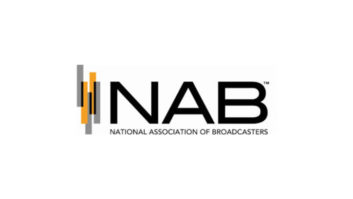(click thumbnail)After 15 years, Joe Klinger has connected all the dots with the new RemoteMix 4.
He has built a super portable audio remote mixer that combines most of his other telephone-centric devices into a powerful single unit.
First, it’s a four-channel field audio mixer combined with a four-channel headphone amplifier. Then he added a phone line hybrid and keypad, a universal PBX handset interface, a wired hookup to a cell phone, and — just in case you need it — a Bluetooth cellphone adapter.
It all comes together in a single, battery-operated 3.8 pound unit a bit smaller than a lunch box (9.5 inches x 8 inches x 3 inches).
Now, I must admit it took a bit of time to wrap my brain around this remarkable device, as each product I have used individually. But the idea of wrapping them all together in a single box is a bit overwhelming.
Just as the well-written literature says, this is more than just a field audio mixer. Rather, it is a “communications interface.” The parts were designed to work together and save setup time in the field.
Once you get the hang of it and understand the many ways to use the RemoteMix 4, it becomes a remarkably flexible tool.
Before we go any further, you need to understand that Joe Klinger is an important name in radio broadcasting. As the man behind JK Audio, Klinger is among the most significant figures in getting audio into and out of your telephone. Forget RadioShack and the other makers of all those cheap telephone interfaces.
When JK Audio started 15 years ago, it made a few inexpensive — yet bulletproof — phone interfaces. Now the company, based in Sandwich, Ill., has dramatically expanded into a full-service business with a range of mixers, bridges, hybrids, interfaces, taps and amplifiers.
It is a wonderful American success story with the RemoteMix 4 as its top product.
Multi-tasking
For radio stations, the RemoteMix 4 is ideal as the front end for live remotes. Use it as a phone line hybrid, calling into your studio talk show hybrid. Or use it as a front-end mixer for your POTS, ISDN or IP codec. Or use it with your laptop codec. It does it all.
The mixer will first attempt to connect in “hands-free” mode to a cell phone. If this type of connection is not available, it will connect to any other product, such as a notebook or portable that allows a Bluetooth wireless connection. This wireless headphone mode offers a full audio bandwidth stereo connection.
Mic inputs 1 and 2 come only with 48 volt phantom power switches. Inputs 3 and 4 add a 40 dB pad for a line-level balanced input. A stereo 3.5 mm line-level input is available for stereo recorders. A master output contains the sum of all four XLRs and the 3.5 mm input. Audio is at full 20 Hz to 20 kHz bandwidth.
Each of the four mono headphone jacks can be set to hear either a mix of local microphone and line inputs, or the return from the phone line, which will include a lesser amount of your local mix.
Product CapsuleJK Audio RemoteMix 4 Portable Audio Remote Mixer
Thumbs Up

- Combines telephone-centric devices into one unit
- Bluetooth cellphone adapter
- ‘Astounding’ flexibility
- Smaller than a lunch box
Thumbs Down
- Some wireless phones generate excessive RF noise, resulting in ‘chattering’ or ‘motor boat’ sound
Price
$1,395
Contact
JK Audio | (815) 786-2929 | visit www.jkaudio.comAn RJ-11 phone line jack connects to a single analog line. Another jack connects to the handset jack on a PBX television. An ABC switch adjusts it for electret-, dynamic- or carbon-type element in the handset.
A soft limiter prevents overdriving the phone line interfaces, while the mixer XLR output offers full-range sound. Bass boost adds some low end to the feed before sending the signal down the line.
For television applications, the unit does IFB; but we are focused on radio here, so let’s target a sports remote. It’s as simple as connecting the RemoteMix4 to a single phone line, dialing up the station on the keypad and checking the connection with the telephone headset. If everything works, you’re on the air.
If there is no analog phone line, use a cell phone — either through the headphone jack or with a wireless Bluetooth connection.
The mixer also can be used with wireless analog (bag) telephones in conjunction with their proprietary fax/modem adapters. In this case, the fax/modem adapter should be connected to the RJ-11 phone line jack.
The mixer runs on a pair of 9 volt batteries or through a 100–240 volt desktop-style power supply (supplied). Phantom power can use a lot of electricity, so it only runs if any of the rear-panel 48 volt switches are set to “on” position. Low-noise, low-power ICs are used throughout to preserve battery life. Use one battery or two. Separate compartments are for hot-swapping batteries.
Battery life is hard to gauge, but Klinger estimates seven hours through a cellphone using Bluetooth wireless technology at a distance of one meter; nine hours through the phone line hybrid, using a phantom-powered microphone; or 10 hours through the phone line hybrid using dynamic microphones.
Also, the wireless interface on the RemoteMix 4 works well with most cellular telephones. However, some wireless telephones generate excessive RF noise which can be can be heard as a “chattering” or “motor boat” sound. The noise from these particular telephones will be unacceptable for most broadcast applications.
Priced at $1,395, the RemoteMix 4 is the ideal combination of components and functionality for an American remote radio broadcast. Its flexibility is astounding and it is ready for any situation you hand it.
At first its full complement of features may throw you, but everything is there for a reason. Once you get the full picture of its features, there’s no turning back.












